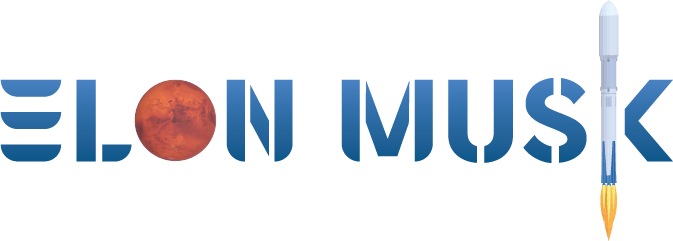
Falcon 9 launches ESA’s Hera asteroid mission
- by SpaceNews
- Oct 07, 2024
- 0 Comments
- 0 Likes Flag 0 Of 5

SpaceX webcast
CAPE CANAVERAL, Fla. — A Falcon 9 successfully launched a European asteroid mission Oct. 7 in a partial return to flight for the rocket.
The Falcon 9 lifted off from Cape Canaveral Space Force Station at 10:52 a.m. Eastern. The rocket deployed the Hera spacecraft for the European Space Agency about 76 minutes later, after two burns of the upper stage to place the spacecraft on an interplanetary trajectory.
The launch took place despite weather conditions that were dismal at times, with thick clouds and rain. A forecast Oct. 6 projected only a 15% chance of acceptable weather, but conditions improved during the morning, allowing the launch to proceed.
The launch was the first for the Falcon 9 since the Crew-9 mission Sept. 28 that suffered an anomaly during a final burn to deorbit the upper stage after deploying the Crew Dragon spacecraft. The Federal Aviation Administration announced Oct. 6 it cleared SpaceX to proceed with the launch since the upper stage, also placed on an Earth-escape trajectory, would not be deorbited. The FAA, though, has yet to allow other Falcon 9 launches with such deorbit burns to proceed.
The launch was the 23rd and final flight of the booster, designated B1061. SpaceX said that the “additional performance required to deliver the payload to an interplanetary transfer orbit” required expending the booster, which first flew nearly four years ago on the launch of the Crew-1 mission. The booster was also used on Crew-2 as well as one space station cargo mission as well as for satellites for other customers and 10 Starlink missions.
The Hera mission will visit the near Earth asteroid Didymos and its moon Dimorphos, the target of NASA’s Double Asteroid Redirection Test (DART) mission two years ago. DART deliberately collided with Dimorphos, changing the period of its orbit around Didymos and demonstrating the “kinetic impactor” technique for deflecting potentially hazardous asteroids.
Hera will study Didymos and Dimorphos in the aftermath of the impact to see how it altered Dimorphos and better understand the effectiveness of the kinetic impactor technique. “With Hera, it’s like a detective going back to a crime scene,” said Patrick Michel, principal investigator for the mission, at an Oct. 6 briefing.
The 1,081-kilogram Hera spacecraft will fly by Mars in March 2025 before arriving at Didymos and Dimorphos in late 2026. Hera will study Didymos and Dimorphos using 12 instruments in several phases, moving gradually closer to the asteroids.
Hera is also equipped with two 6U cubesats that it will deploy. Juventas is equipped with a radar that will probe the interior of the asteroids to determine their structure and see if they are “rubble pile” collections of smaller rocks. Milani will study the surfaces of the asteroids and their composition, which could show whether Dimorphos is made of the debris spun off the surface of Didymos.
The two cubesats will end their missions by attempting landings on Dimorphos, with Juventas equipped with a gravimeter to measure the asteroid’s gravitational field. Hera’s mission may end with a landing on the larger Didymos.
“We don’t really know what we will see,” Michel said, noting there are many models of what the DART impact did to Dimorphos. “We’re going to have a surprise when we see what Dimorphos looks like, which is, first, scientifically exciting but also important because if we want to validate the technique and validate the model that can reproduce the impact, we need to go find out the outcome.”
Hera cost 363 million euros ($401 million) and required a rapid development approach, project officials said, with funding for the mission approved only in late 2019. “Few believed we were going to make it,” Ian Carnelli, Hera project manager at ESA, said at an Oct. 6 briefing where he thanked the mission partners, including prime contractor OHB, for their support.
Germany was the leading contributor to the Hera mission. Walther Pelzer, director general of the German Space Agency at DLR, said in an Oct. 6 interview that the country was interested in both Hera’s role in planetary defense as well as its support for technology development.
That could spur development of other missions. “I think we will gain a tailwind for Ramses,” a proposed mission that would use the Hera spacecraft design to visit the asteroid Apophis before its close flyby of the Earth in 2029. ESA has funded initial work on the mission but needs to secure full funding for it at the next ministerial meeting in late 2025.
He added there was strong public interest in Germany in the mission, more than expected. When DLR posted an interview about the mission online, he recalled, “there was a very, very high response, higher than even Ariane 6.”
Carnelli described one aspect of the unconventional approach for the mission: the final flight software for the spacecraft was compiled while on a plane flying across the Atlantic to Florida for the launch, then sent to ground teams using the WhatsApp messaging app. Within three hours, the software was verified and installed on the spacecraft. “I don’t think this has ever been done before,” he said.
“I hope Hera is going to pave the way for many more missions that are fast and innovative,” he said. “It involves risk-taking, for sure, but we’re exploring the solar system in new ways.”
Related
Please first to comment
Related Post
Stay Connected
Tweets by elonmuskTo get the latest tweets please make sure you are logged in on X on this browser.
Sponsored
Popular Post
Middle-Aged Dentist Bought a Tesla Cybertruck, Now He Gets All the Attention He Wanted
32 ViewsNov 23 ,2024
Tesla: Buy This Dip, Energy Growth And Margin Recovery Are Vastly Underappreciated
28 ViewsJul 29 ,2024






 Energy
Energy



















